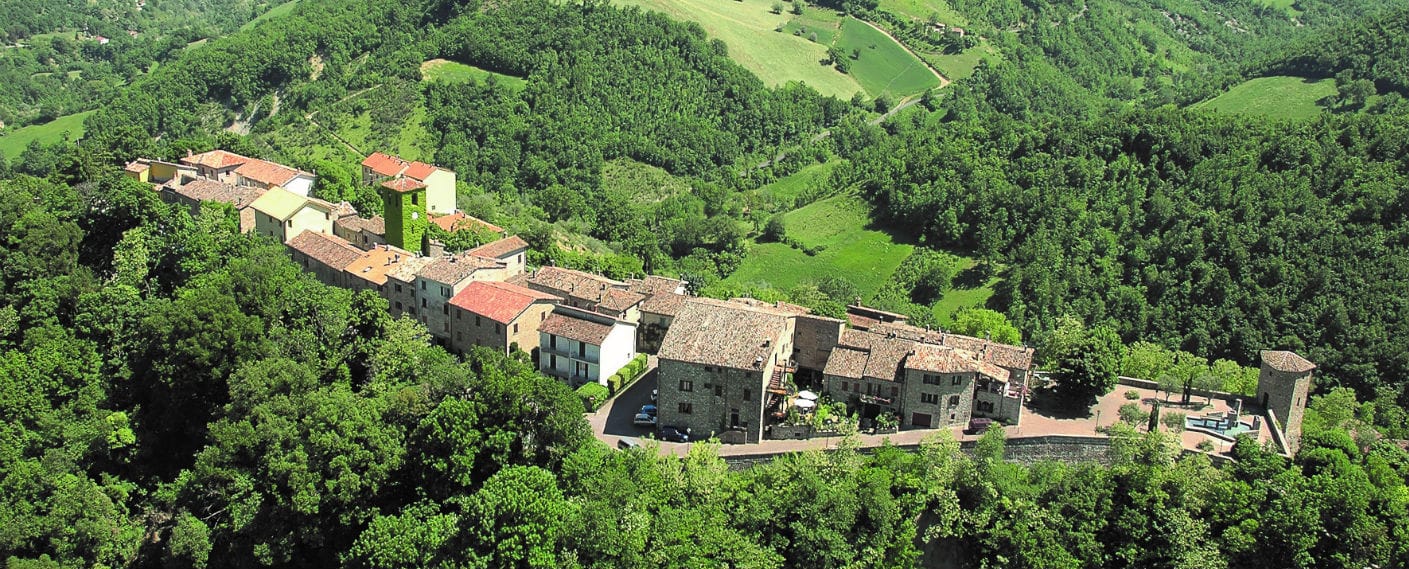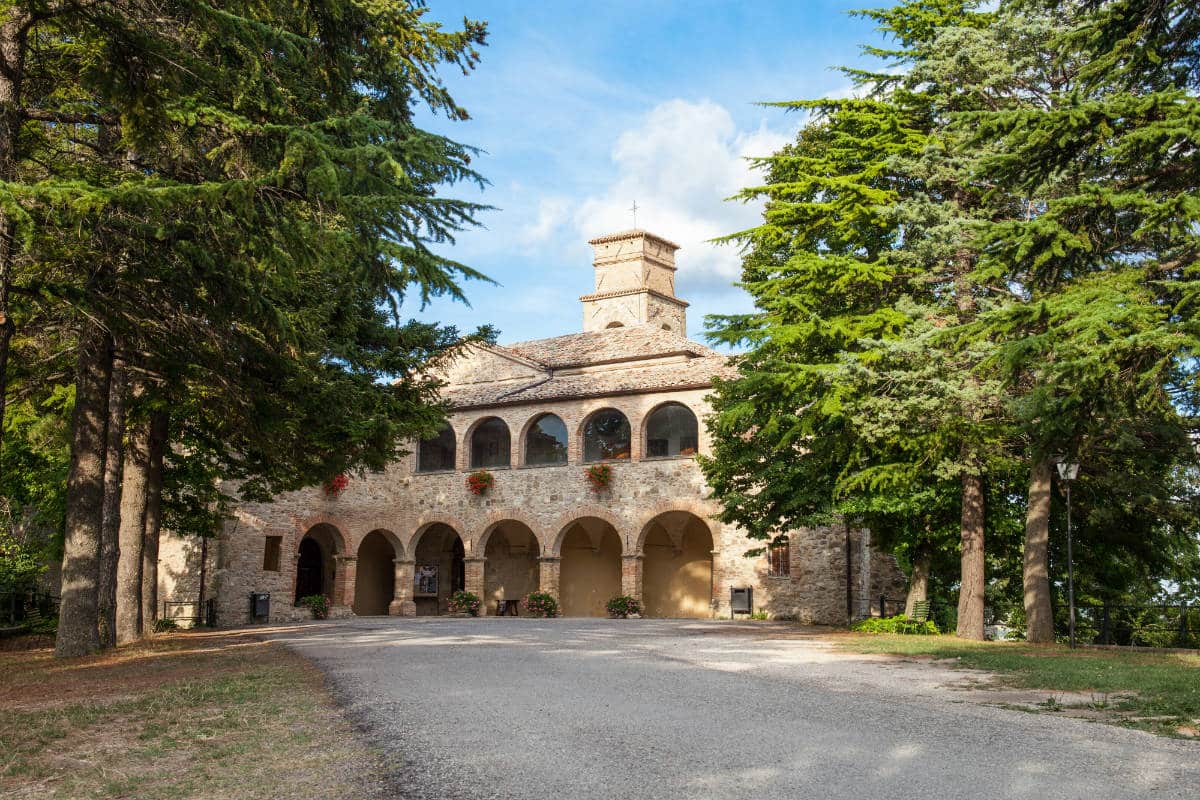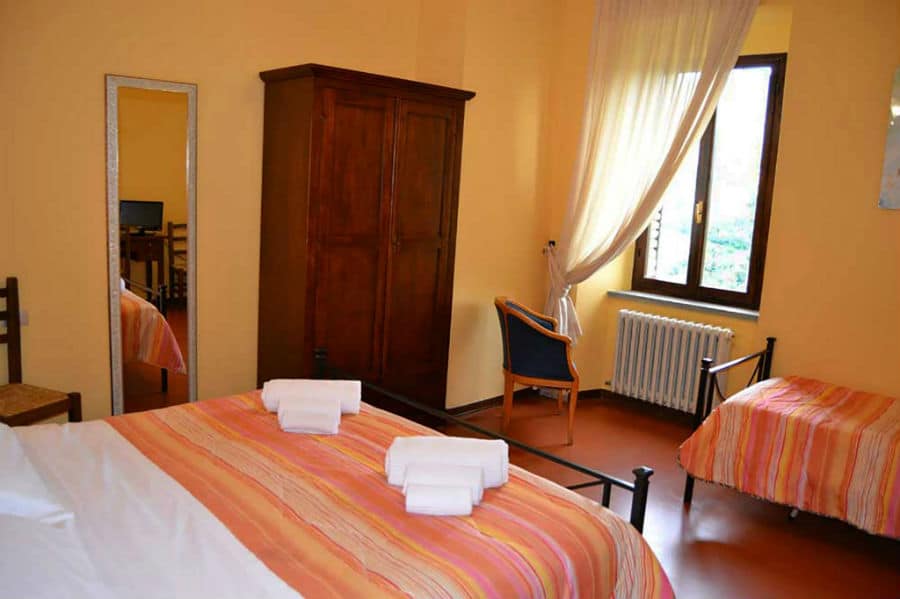Dates for tradition to its founder Saint Francis (1213). A papal bull dated 1248 grants indulgences to the faithful, which contribute to its restoration. It is one of the largest monasteries of Marche Region, with spacious interiors and over 10 hectares of land, used as park and sports area. Its structure is located on a hillock ameno and suggestive, surrounded by green, has suffered in the course of the centuries restorations and enlargements, species in 1600. It belongs to the Church of Montefiorentino the Polyptych of Alvise Vivarini (1475), today exposed at the National Gallery of Art in Urbino. The Chapel of the Oliva Counts, built in 1484, to the Commission of the Count Carlo Oliva, is the flagship of the village of Frontino, an obligatory destination for lovers of art, is attributed to Francesco De Simone Ferrucci from Fiesole. Entering the church, appears on the right in a soft light and strikes for its refined language and rigorous reporting to the taste of Tuscan artists. It is a work of great renaissance purity for the architectonic lines for the marble sarcophagi finely carved. Beautiful two kneelers inlaid, realized by Maestro Zocchino (1493), which recall the Studiolo of the Duke of Urbino. The altarpiece on table, one of the most succesful works of Giovanni Santi, father of Raffaello, represents the Madonna with Child and Saints Giorgio, Francesco Antonio Abate and Jerome (1489). There are also preserved a fresco with Sant’Antonio Abate, attributed to the Evangelist by Piandimeleto, and an ancient organ, a choir in walnut seventeenth-century and other minor paintings. The ground floor of the Convent encloses the cloister and is structured in various halls with times throughout the sixth or crociera. At the convent is located even a collection of various paintings and antique texts.




